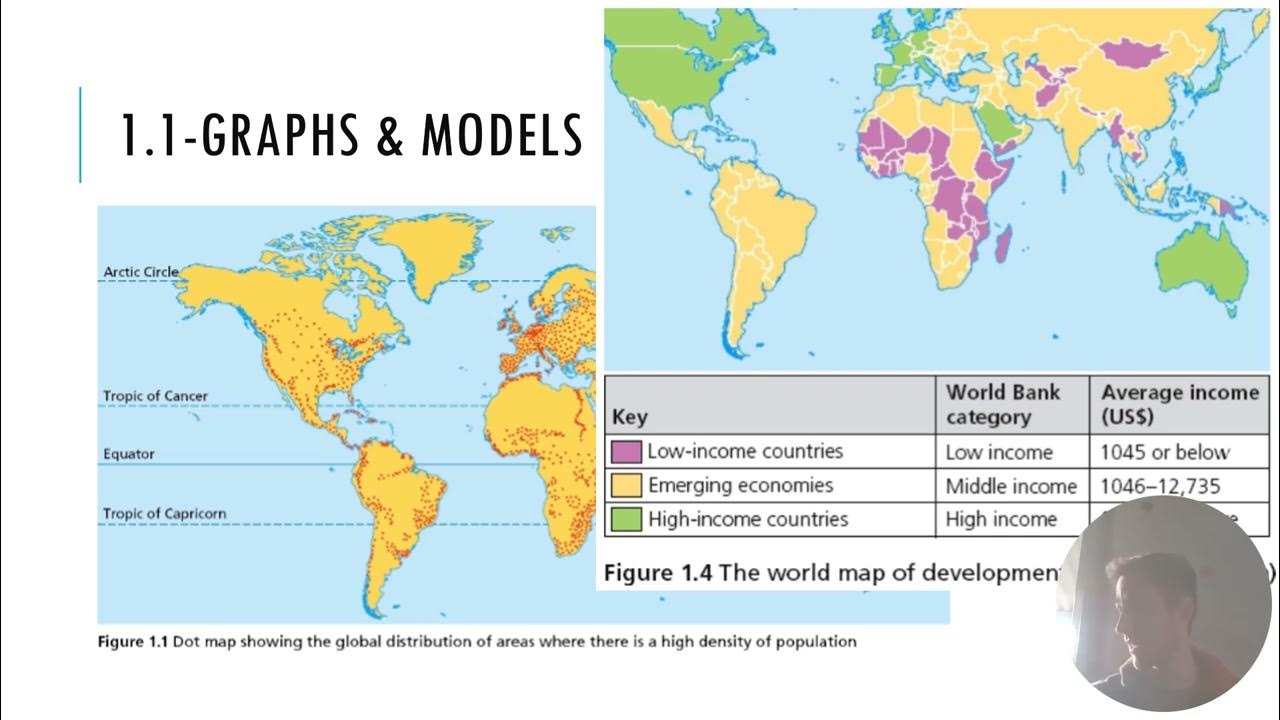Gr 11: Geography development
Summary
TLDRIn this Grade 11 geography lesson, the instructor reviews key concepts of development covered in Grade 9, emphasizing the terminology, economic, social, and demographic indicators. The lesson explains development as a process that improves people's quality of life, varying by perception. It covers the importance of measuring development, indicators like GDP, GNP, and the Human Development Index, and differentiates between more and less economically developed countries. The session also includes activities to reinforce understanding, aiming to help students apply their knowledge effectively.
Takeaways
- 📚 Development involves a process of change that improves people's lives.
- 🌍 The United Nations Development Program defines development as leading a long, healthy life, having access to knowledge, and a decent standard of living.
- 📈 Economic, social, and demographic indicators are used to measure development.
- 💡 Development is perceived differently based on people's previous conditions and current improvements.
- 🏡 Importance of development includes determining the quality of life and identifying areas limiting progress.
- 💵 Economic indicators like GDP, GNP, and GDP per capita measure a country's economic output and development.
- 👷♂️ The structure of the economy (primary, secondary, tertiary, quaternary activities) impacts development levels.
- 📊 Social indicators such as literacy rates, access to healthcare, and life expectancy measure well-being and development.
- 🔢 Demographic indicators provide statistics like birth rates, death rates, and population growth, influencing development.
- 🌐 Human Development Index (HDI) combines economic and social factors to give a more comprehensive measure of development.
Q & A
What is the definition of development according to the United Nations Development Program?
-Development is defined as leading a long, healthy life, being knowledgeable, having a good quality of life, access to resources, and the ability to participate in community life.
How does development vary based on perception?
-Development varies based on what people had before and what they have now. For instance, moving from informal settlements to low-cost housing is considered development in poorer countries.
Why is measuring development important?
-Measuring development is important to determine the level of development, identify areas limiting development, and develop strategies to improve development.
What are the three main types of development indicators?
-The three main types of development indicators are economic, social, and demographic indicators.
What is Gross Domestic Product (GDP) and how is it measured?
-GDP measures the value of goods and services produced within a country's borders by citizens and non-citizens for a specific period, usually a year.
What is the difference between GDP and Gross National Product (GNP)?
-GDP includes goods and services produced within a country's borders by citizens and non-citizens, while GNP includes goods and services produced by a country's citizens both domestically and abroad.
What is the Gini coefficient and what does it represent?
-The Gini coefficient represents income inequality within a nation, with a score ranging from 0 (full equality) to 1 (no equality).
How do economic indicators like GDP per capita help in understanding development?
-GDP per capita measures the country's economic output per person, providing a better idea of the average income and quality of life, which helps in understanding economic development.
What are some examples of social indicators of development?
-Examples of social indicators include literacy rates, access to healthcare, life expectancy, and the risk of diseases.
What is the Human Development Index (HDI) and what does it measure?
-The HDI measures the level of human development based on three key dimensions: a long and healthy life, access to education, and a decent standard of living. It ranges from 0 (worst quality of life) to 1 (perfect quality of life).
Outlines

This section is available to paid users only. Please upgrade to access this part.
Upgrade NowMindmap

This section is available to paid users only. Please upgrade to access this part.
Upgrade NowKeywords

This section is available to paid users only. Please upgrade to access this part.
Upgrade NowHighlights

This section is available to paid users only. Please upgrade to access this part.
Upgrade NowTranscripts

This section is available to paid users only. Please upgrade to access this part.
Upgrade NowBrowse More Related Video

MEMANFAATKAN PERSAINGAN MERAIH KEUNGGULAN EKONOMI & PENGEMBANGAN PUSAT-PUSAT KEUNGGULAN EKONOMI

Posisi Strategis Indonesia & Potensi SDA #kumer

Going from grade 5 to grade 9: AQA English Language Paper 1 Q2 (2018 exam)

Finnian & Mr. Carley Review IB Geo Unit 1 (Part 1)

APBN dan APBD Part 1 - Materi Ekonomi Kelas XI SMA

RANGKUMAN METERI GEOGRAFI KELAS X SMA SEMESTER 1 KURIKULUM MERDEKA
5.0 / 5 (0 votes)